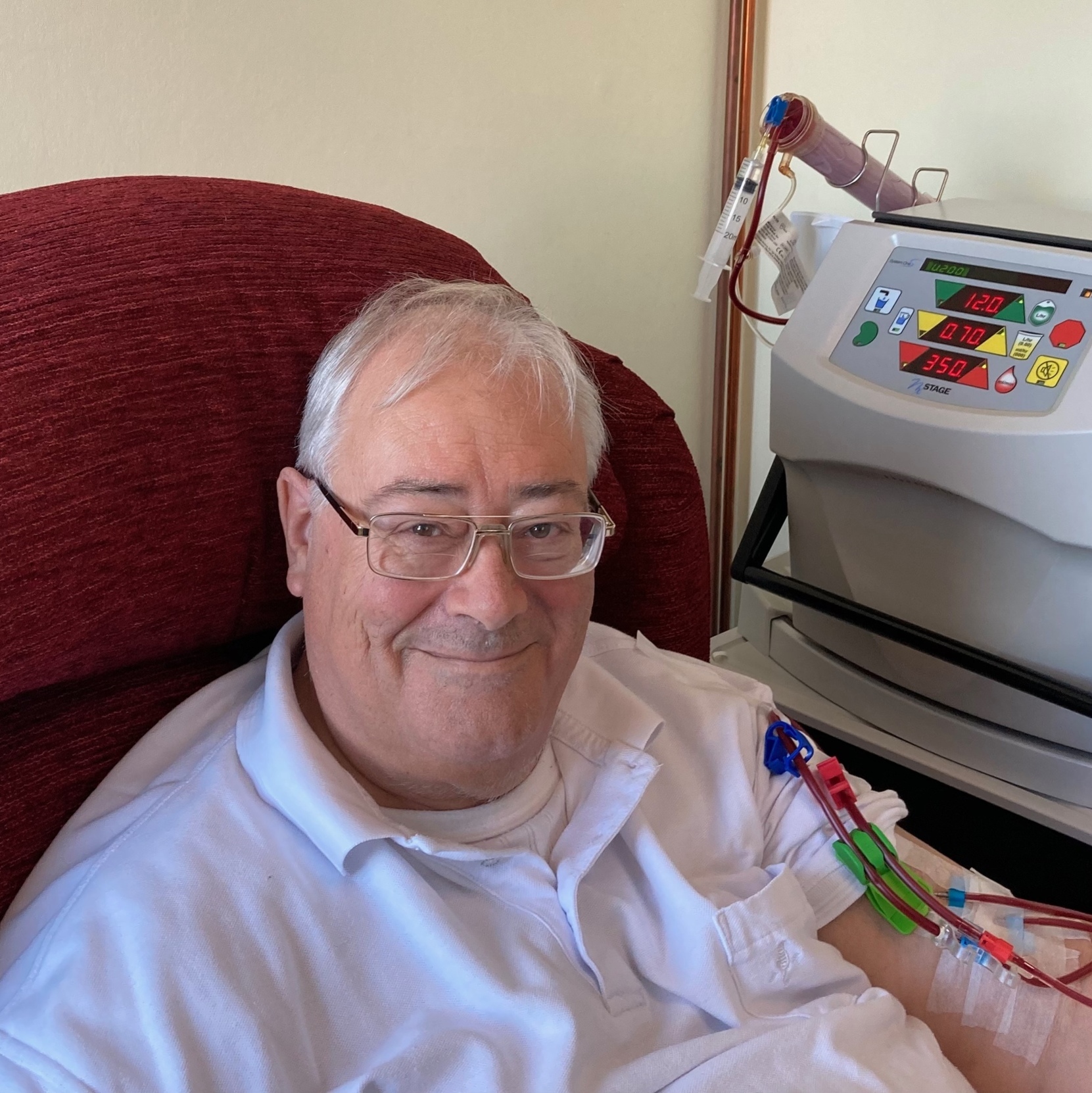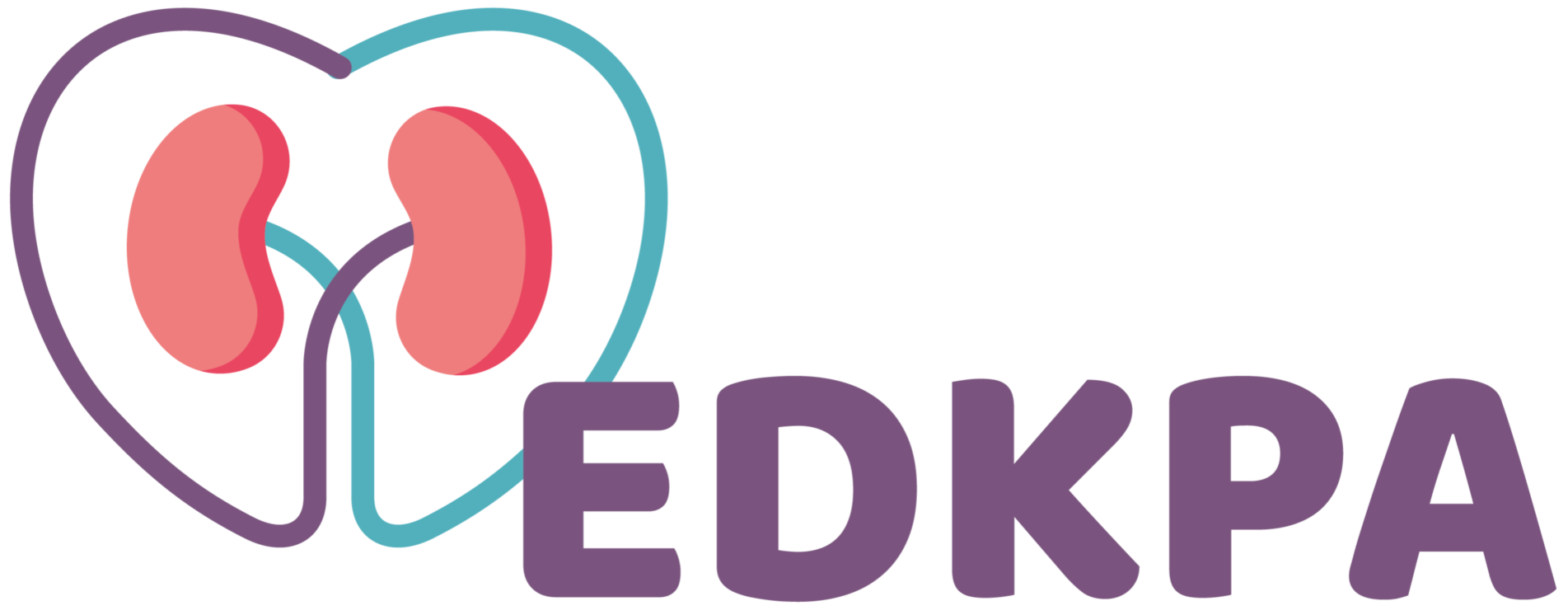Have you heard of Kidney Beam? Helping people living with kidney disease to feel good through movement, education and wellbeing support.
Take a look to find out how to get more active and receive the motivation and moral support from other people like you!


Chris Rolfe
Chris Rolfe is our EDKPA chairman, he's recently moved across to home haemodialysis, here's his story of the why, how and now...
Every time I talk to a patient on dialysis, I find their experience is different from mine – there are core similarities, but the view from the patient’s bed also depends on their state of health, mental wellbeing and the extent to which they have support from family or friends. It is clear that dialysis is a very personal experience. I started dialysing in a hospital unit, but chose to move to home haemodialysis, which I thought would improve both my health and my personal independence – so far, this has been correct.
My in-unit experienced in dialysis began during the first COVID lockdown, without much introduction. I went into Exeter hospital, I was introduced to the dialysis machine by a nurse and told to lie down on the bed. She came back and connected me to the machine through two frighteningly large needles in my arm and what looked like miles of tubing. I lay there for two hours at which point I was disconnected from the machine. My wife was with me and we both found it very strange and quite alarming.
I gradually settled into the process of dialysing, initially for two hours at a time, then 4 hours at a time for three days a week, but obviously there were 2 or 3 further hours involved getting to and from Exeter and waiting my turn for a machine. I later was able to transfer to the Torbay unit, closer to home.
I experienced large and small emergencies from time to time. My bloodlines clotted, causing the dialyser to stop and the whole process ending for the day. My blood pressure became variable and several times fell like a stone such that I passed out. The nurses had difficulty getting needles into my arm correctly - apparently, I have a “difficult” fistula in my arm and I had to wait for the most experienced staff to perform this task until I decided to learn how to do it myself.
After about six months I began to be quite frustrated with the need to attend the unit. deal with delay problems that were inevitable with staff absences and emergencies with other patients, etc. I had wondered about dialysing at home and began to take the matter very seriously and sought a meeting with the home haemodialysis team. They agreed to take me for one week’s trial as soon as they could, which proved to be about six weeks into the future. That went very well in terms of my treatment - by the end of that week I felt better than at any point since I had started dialysis and my blood pressure had also stabilised.
I decided I wanted to become a full-time home haemo patient and set about planning to make various changes at home and to get booked in for the training period (minimum two weeks or so) with the home haemodialysis team. These processes took about another 2 1/2 months.
In April 2021 I did my first home haemodialysis session at home. There are some patients who are forced to dialyse at home on their own having no available carer. I am fortunate that my wife is able to assist. I set up the machine and do the needling and she helps with taping needles in place, managing problems when you find another pair of hands useful and so on. It’s always comforting to know that she's there in in an
Dialysing at home is not an easy option. However, if you have good personal self-discipline it does mean that you can take some control over your own treatment. As many nurses have said to me, as the patient, you have a better idea what's going on inside you than anybody else. I am now fairly expert at putting needles in my arm. I can set the machine up fairly quickly without making mistakes. I am accustomed to the various alarm conditions that might arise and I can deal with them calmly and effectively.
I also have control over my timetable. Broadly, I dialyse five days a week for three hours and 20 minutes and the process as a whole typically takes me five hours. However, I can choose when I dialyse and on what.
I am allowed to drink slightly more fluid. In the unit I was told I could have a maximum of 1 litre of fluid a day and that really is a tough thing to be able to follow. However, I got used to it like everybody else but now I am dialysing more frequently I can have perhaps another three or 400 millilitres of fluid without problems with dialysis. This actually helps me in various other ways as well, particularly with having less constipation problems.
Dialysing at home can take over house and home, finding a place to dialyse which can accommodate the equipment, store the boxes full or medical supplies and reach a water supply and a drain. I am fortunate in that I've converted my study into my dialysis room so I have hot and cold water, a wash basin and I have the dialysis machinery plumbed into the water mains and the main drain. I also have room for a comfortable chair which reclines and that's been particularly helpful to me as I find my blood pressure drops as I start dialysing and leaning back is a fairly effective help in this regard.
Since starting to do home dialysis last April, I have been away twice for two nights but otherwise we've only been away from home on day trips. I am planning to take the travel variant of the home haemodialysis machinery away on holiday this summer. I'll be away a week and I'll need to be able to dialyse but the resource is there to help and although it would be less easy than doing it at home I am confident I will be able to dialyse.
Dialysis is so much at the centre of our life now that our machine has a name - Cedric. Don't ask me why!

We'd love to hear from you!
If you have a story you’d like to share, don’t be shy (it doesn’t need to be word perfect) send it in, we’ll proof it and amend where appropriate.
We’d love to hear from you!



